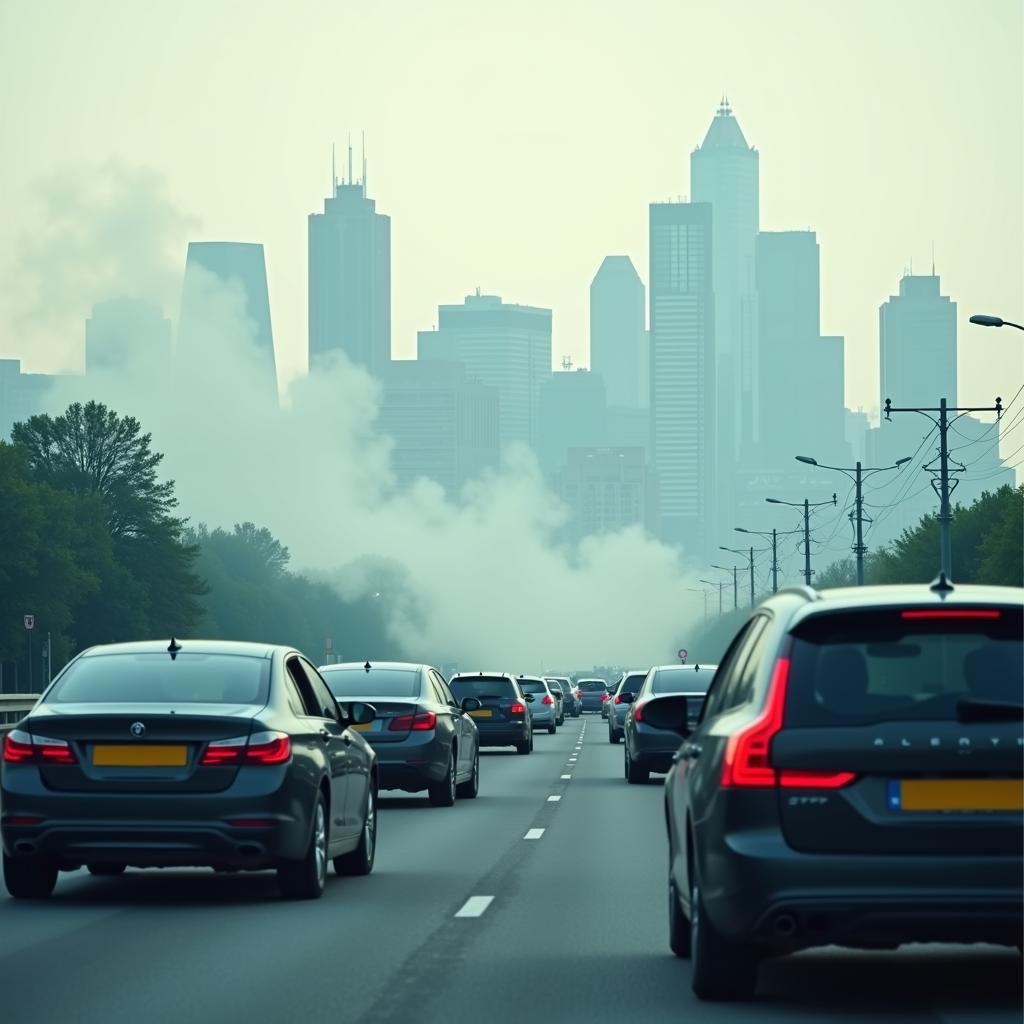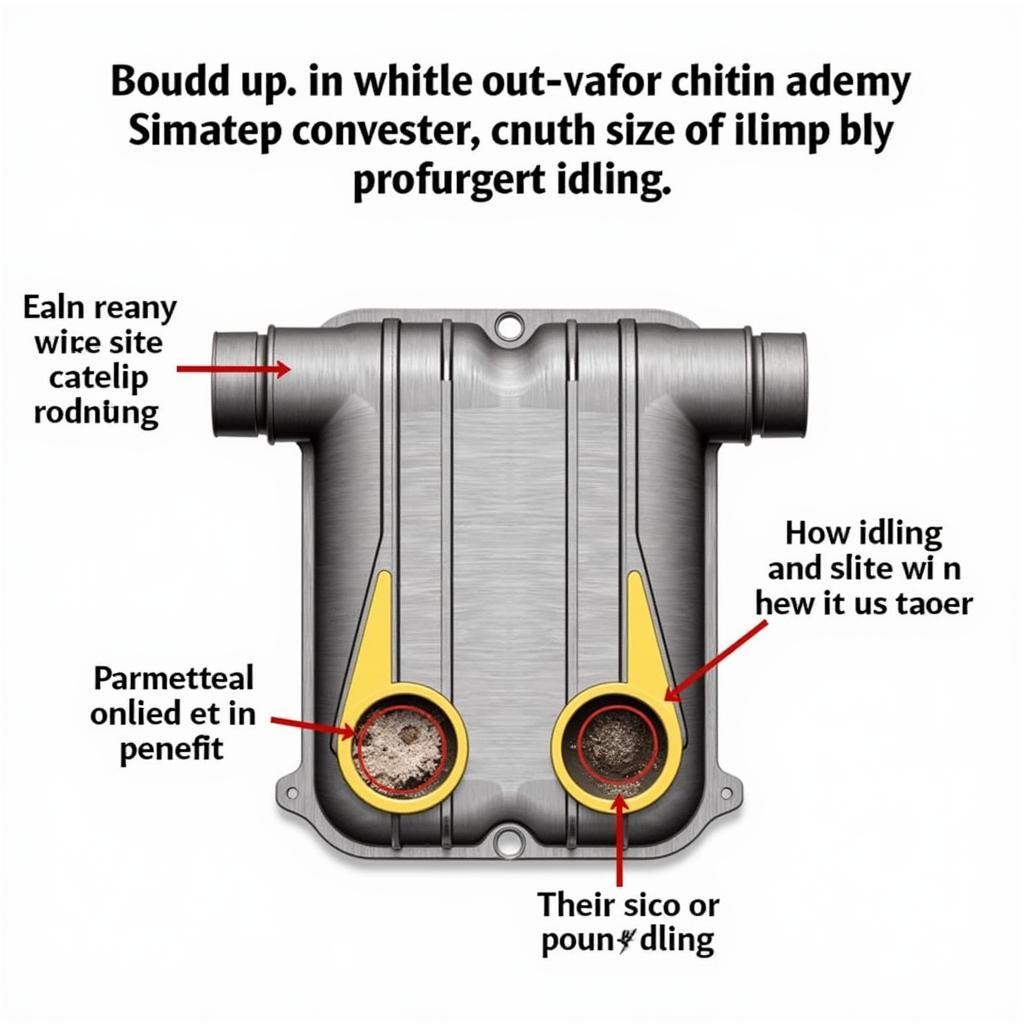Leaving your car idling might seem harmless, especially on a cold winter morning or a scorching summer day. But the truth is, idling a car too long can lead to a surprising number of problems, impacting your wallet, your car’s health, and even the environment. This article dives deep into the Problems Of Idling A Car Too Long, offering solutions and preventative measures.
The Hidden Costs of Excessive Idling
Idling your car for extended periods isn’t just wasteful; it’s actively damaging. It contributes to increased fuel consumption, which translates directly into higher costs at the pump. While the amount varies depending on engine size and other factors, it’s estimated that idling for just 10 minutes a day can waste up to a gallon of fuel per week.
Beyond fuel costs, excessive idling puts strain on your engine components. Prolonged idling can lead to the buildup of carbon deposits, clogging your engine and potentially leading to costly repairs down the line. Think of it like letting a pot boil dry on the stove – eventually, something’s got to give.
Environmental Impact of Idling
Perhaps less obvious but equally important is the environmental impact. Idling vehicles release harmful emissions, including carbon monoxide, hydrocarbons, and nitrogen oxides, contributing to air pollution and impacting air quality. These emissions contribute to smog and respiratory problems, especially in urban areas with high traffic congestion.
Even in seemingly remote areas, the cumulative effect of idling vehicles can have a detrimental impact on the local environment. Consider the wildlife and natural habitats affected by the constant release of pollutants from idling cars.
 Environmental Impact of Car Idling
Environmental Impact of Car Idling
Problems of Idling a Car Too Long: Engine Wear and Tear
Excessive idling puts undue stress on various engine components. Spark plugs can foul, leading to misfires and reduced engine efficiency. Oil can become contaminated more quickly, requiring more frequent oil changes. And over time, the catalytic converter, a critical component for emissions control, can become damaged, leading to expensive repairs.
How Idling Affects Your Catalytic Converter
The catalytic converter operates most efficiently at higher temperatures. During idling, the converter doesn’t reach its optimal operating temperature, reducing its effectiveness and potentially leading to damage from unburnt fuel. This can result in costly repairs and increased emissions.
 Catalytic Converter Damage from Idling
Catalytic Converter Damage from Idling
What about Idling in Winter or Summer?
While it might be tempting to let your car warm up on a frigid winter morning or cool down on a sweltering summer day, modern vehicles don’t require extended idling periods. In fact, idling for more than a minute or two in these conditions is generally unnecessary and can even be counterproductive. The best way to warm up your engine is to drive gently for the first few minutes.
Is it Bad to Idle a Car in the Cold?
“Idling a car in extreme cold for more than a minute or two is unnecessary and can contribute to fuel waste and engine wear,” says automotive expert, Michael Stevenson, Lead Engineer at Automotive Innovations Inc.
Solutions and Preventative Measures
The simplest and most effective solution is to simply turn off your engine when parked for more than a minute or two. This not only saves fuel and reduces emissions but also protects your engine from unnecessary wear and tear. Making this a habit can significantly extend the life of your vehicle and save you money in the long run.
How Can I Reduce My Idling Time?
- Turn off your engine when parked.
- Combine errands to reduce the number of stops.
- Use drive-throughs sparingly.
- Avoid idling in traffic jams if possible.
“Small changes in driving habits can make a big difference in reducing idling time and its associated problems,” adds Sarah Miller, Senior Mechanic at Performance Auto Services.
Problems of Idling a Car Too Long: Conclusion
The problems of idling a car too long are numerous and impactful, affecting your finances, your car’s health, and the environment. By understanding the issues and taking simple steps to reduce idling time, you can save money, extend the life of your vehicle, and contribute to a cleaner environment. For more information or assistance, connect with the experts at AutoTipPro. Call us at +1 (641) 206-8880 or visit our office at 500 N St Mary’s St, San Antonio, TX 78205, United States.
 Tips to Reduce Idling Time
Tips to Reduce Idling Time
FAQ
-
How long is too long to idle a car? Generally, anything over a minute or two is considered excessive.
-
Does idling damage my engine? Yes, prolonged idling can lead to carbon buildup, oil contamination, and damage to the catalytic converter.
-
Is it bad to idle a car in the summer? Yes, idling contributes to fuel waste, emissions, and unnecessary engine wear, regardless of the outside temperature.
-
How can I tell if my car is idling too much? Monitor your fuel consumption and pay attention to any unusual engine noises or performance issues.
-
Does idling affect my car’s battery? While idling does charge the battery, it’s not the most efficient way to do so and can still contribute to engine wear.
-
Is it illegal to idle your car? In some areas, excessive idling is restricted or prohibited, especially in school zones and near hospitals.
-
What is the best way to warm up my car in the winter? Drive gently for the first few minutes rather than idling.






Leave a Reply